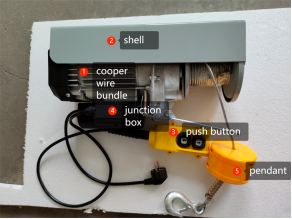


Understanding the Pallet Truck Features, Benefits, and Best Practices
Pallet trucks are essential tools in warehouses, distribution centers, and manufacturing facilities. As a manual or powered device designed to lift and transport pallets, they play a critical role in streamlining operations and improving workplace efficiency. This article aims to provide an overview of pallet trucks, including their features, benefits, and best practices for usage, ensuring optimal performance and safety.
Features of Pallet Trucks
Pallet trucks come in various designs and functionalities. The most common types are manual pallet trucks and electric pallet trucks. Manual pallet trucks are operated by hand and utilize a hydraulic system to lift heavy loads. Typically equipped with two forks that fit into the pallets, these trucks can lift and lower merchandise, allowing workers to move goods effectively.
Electric pallet trucks, on the other hand, come with a powered motor that enables easier handling, especially over longer distances or on ramps. They often include features such as ergonomic handles, adjustable speeds, and enhanced load capacity, making them ideal for environments requiring frequent transport of heavy loads.
Both manual and electric pallet trucks generally include features like a built-in scale for weighing loads, durable frames made from steel for longevity, and easy maneuverability thanks to swivel wheels. Safety features, such as automatic braking systems and stability checks, are also crucial for preventing accidents in the workplace.
Benefits of Using Pallet Trucks
The benefits of pallet trucks are numerous. Primarily, they significantly reduce the manual effort required to move heavy pallets, helping to prevent worker injuries related to lifting. With improved ergonomics, operators can transport goods without straining their backs or risking muscle injuries.
Additionally, pallet trucks increase efficiency in handling and moving merchandise throughout a facility. They allow for quicker loading and unloading processes, which contributes to faster inventory turnover. This efficiency translates into time savings, enabling employees to focus on other critical tasks, ultimately enhancing overall productivity.

Moreover, pallet trucks are a cost-effective solution for material handling. They require minimal maintenance and are considerably less expensive than other equipment like forklifts, making them an attractive option for small to medium-sized businesses. The simplicity and reliability of pallet trucks mean that they can often be used effectively without extensive operator training.
Best Practices for Usage
To ensure the longevity and safe operation of pallet trucks, following best practices is essential. Here are several important guidelines to consider
1. Training All operators should receive proper training on how to use the pallet truck safely and effectively. This includes understanding the load capacity and correct lifting techniques.
2. Inspection Regularly inspect the pallet truck for any signs of wear and tear. Look for issues such as hydraulic leaks, wheel damage, or any structural problems that could impair functionality.
3. Load Management Always adhere to the truck’s weight limits; overloading can lead to accidents and equipment failure. Ensure that loads are evenly distributed on the pallet.
4. Workplace Safety Keep pathways clear of obstacles to enhance maneuverability. Operators should always be aware of their surroundings and announce their movements to prevent collisions with other workers.
5. Maintenance Routine maintenance is crucial for keeping pallet trucks in optimal working condition. This includes lubricating moving parts, checking the hydraulic system, and ensuring proper tire inflation for powered models.
In conclusion, pallet trucks are invaluable tools that significantly improve the efficiency and safety of material handling processes. By understanding their features, recognizing the benefits they offer, and following best practices for usage, businesses can enhance productivity while minimizing risks associated with manual handling. Whether manual or electric, investing in high-quality pallet trucks can lead to healthier work environments and successful operational outcomes.



